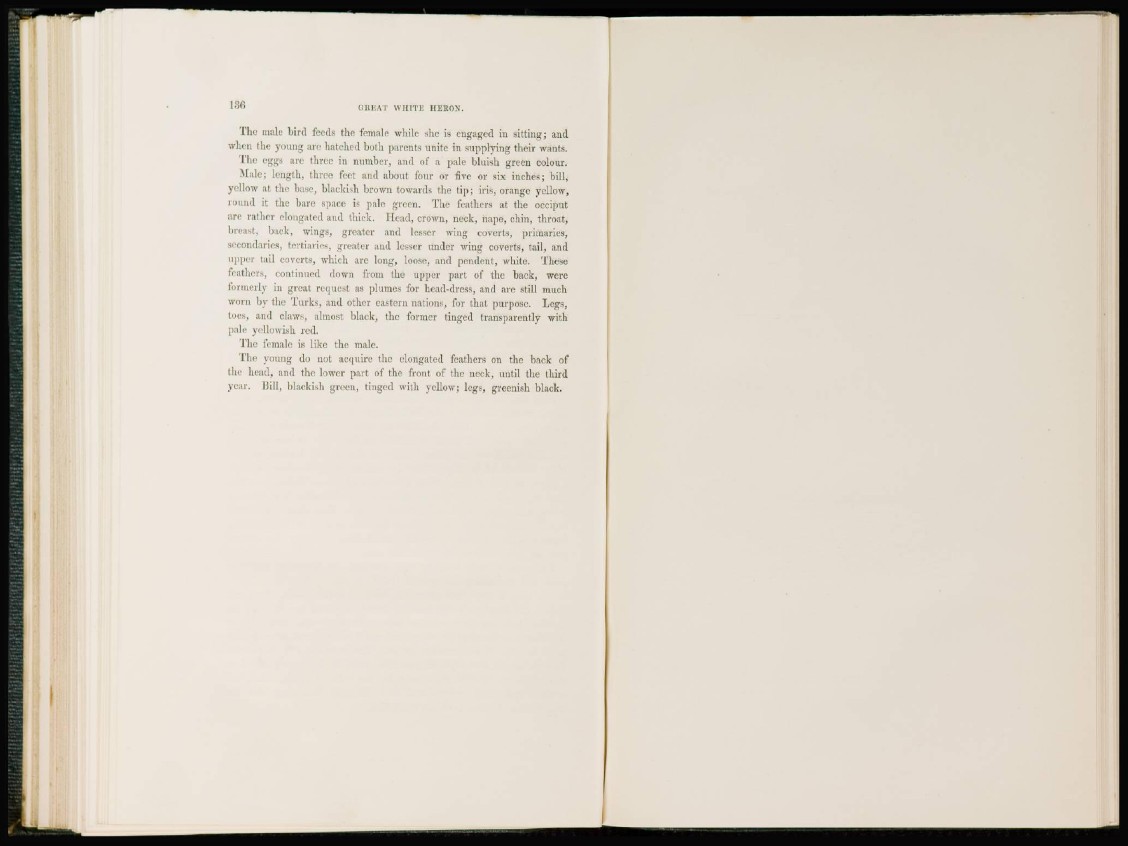
GREAT WHITE HERON.
The male bird (red-, the female while she is engaged in sitting; and
when the young are hatched both parents unite in supplying their wants.
The eggs are three in number, and of a pale bluish green colour.
Male; length, three; feel and about four or five or six inches; bill,
yellow at the base, blackish brown towards the t i p ; iris, orange yellow,
round it the bare space is pale green. The feathers at the occiput
are rather elongated and thick. Head, crown, neck, nape, chin, throat,
breast, back, wings, greater and lesser wing coverts, primaries,
secondaries, tertiaries, greater and lesser under wing coverts, tail, and
upper tail coverts, which arc long, loose, and pendent, white. These
feathers, continued down from the upper part of the back, were
formerly in great request as plumes for head-dress, and are still much
worn by the Turks, and other eastern nations, for that purpose. Legs,
toes, and claws, almost black, the former tinged transparently with
pale yellowish red.
The female is like the male.
The young do not acquire the elongated feathers on the back of
the head, and the lower part of the front of the neck, until the third
year. Bill, blackish green, tinged with yellow; legs, greenish black.